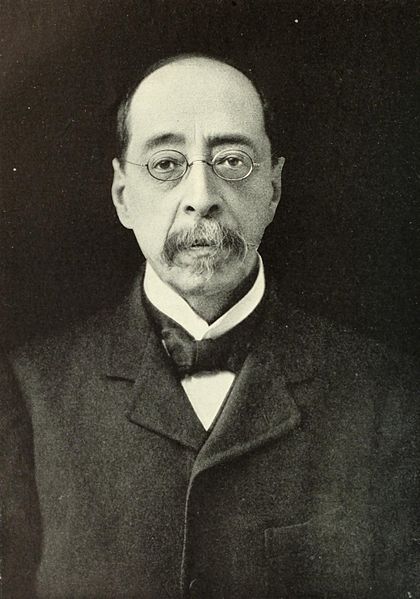John La Farge
John La Farge
John La Farge (1835-1910)
John La Farge (March 31, 1835 – November 14, 1910) was an American painter, muralist, stained glass window maker, decorator, and writer.
La Farge was born in New York City to wealthy French parents and was raised bilingually; as a child, he and his brothers produced a handmade magazine in French entitled Le Chinois.

His interest in art began during his studies at Mount St. Mary's University in Maryland and St. John's College (now Fordham University) in New York. He initially intended to study law, but this changed after his first visit to Paris, France in 1856. Stimulated by the arts in the city, he studied with Thomas Couture and became acquainted with notable literary people. La Farge also studied with the painter William Morris Hunt in Newport, Rhode Island.
La Farge's earliest drawings and landscapes, from his studies in Newport, show marked originality, especially in the handling of color values. Many of La Farge's mythological and religious paintings, including Virgil, were executed in an area of Rhode Island known as "Paradise", in a forest which La Farge called "The Sacred Grove" after Virgil.
He was a pioneer in the study of Japanese art, the influence of which is seen in his work. During his life, La Farge maintained a studio at 51 West 10th Street in Greenwich Village, which now is part of the site of Eugene Lang College at the New School University.
Between 1859 and 1870, he illustrated Tennyson's Enoch Arden and Robert Browning's Men and Women, and worked on children's magazine illustrations with engraver Henry Marsh (American, 1826–1912).
In the 1870s, La Farge began to paint murals, which became popular for public buildings as well as churches.
In 1892, La Farge was brought on as an instructor with the Metropolitan Museum of Art Schools to provide vocational training to students in New York City. He served as President of the National Society of Mural Painters from 1899 to 1904.
He learned several languages (ancient and modern), and was erudite in literature and art; by his cultured personality and reflective conversation, he influenced many other people. Though naturally a questioner, he venerated the traditions of religious art, and preserved his Catholic faith.
He received the Cross of the Legion of Honor from the French Government.
He was elected president of National Society of Mural Painters from 1899 through 1904, and was a member of the principal artistic societies of the United States, including the Salmagundi Club.
In 1904, he was one of the first seven artists chosen for membership in the American Academy of Arts and Letters.
In 1863 he was elected into the National Academy of Design.
La Farge is honored together with Ralph Adams Cram and Richard Upjohn with a feast day on the liturgical calendar of the Episcopal Church (USA) on December 16.



